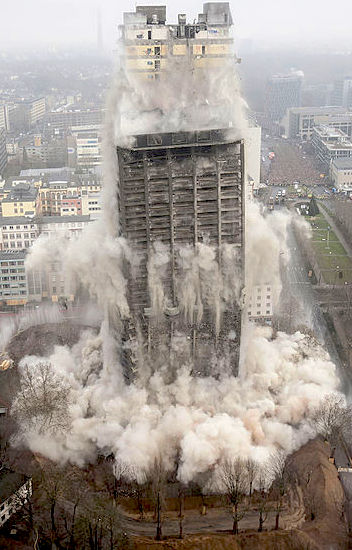New Year predictions are getting more and more popular. In a world that is growing ever more complex and confusing, we seem to be increasingly eager to get some hints about what lies in the fog just ahead of us. Yet what we need is probably less to get some clues about what might be coming up next than to acquire a more acute consciousness and comprehension of the road we are travelling.
It’s that time of the year again. That time when you wish all the best to those around you. That time when you pick your resolutions and try to convince yourself that this is the year when you will finally keep them. That time also when all types of people tell you what to expect from the next twelve months. Astrologers of course, who have read in the stars when you can expect to get a pay rise, when you are due to meet the love of your life, or when you have the best chances of procreating. But also a growing array of journalists, analysts, futurists, specialists, experts, bloggers, and other luminaries who have figured out what this year has in store for you, your job, your industry, your investments, your country, and your world.
Of course, all New Year predictions are not equal. Some are more worthy of serious consideration than others. Some are based on sound data and thorough research while others are merely exercises in fantasy and imagination. Some claim to be ‘objective’ while others don’t even bother to pretend. More importantly, some carry far more weight than others as they have a much stronger influence on the thinking and actions of those people whose thinking and actions actually contribute to influence the course of events and the shape of reality.
…click on the above link to read the rest of the article…





 It is that time of year again where we try to forecast what the oil price will do over the coming 12 months. Last year I forecast $60 / bbl for Brent year ending 2017 and with Brent trading on $66.50 as I write I can conclude that I got lucky this year. My friend wagered on $78 and our bet this year was too close to call. My forecasting effort is based on trying to understand the supply, demand, storage, price dynamic and since this seemed to work pretty well this year I will repeat the exercise with some slight modifications.
It is that time of year again where we try to forecast what the oil price will do over the coming 12 months. Last year I forecast $60 / bbl for Brent year ending 2017 and with Brent trading on $66.50 as I write I can conclude that I got lucky this year. My friend wagered on $78 and our bet this year was too close to call. My forecasting effort is based on trying to understand the supply, demand, storage, price dynamic and since this seemed to work pretty well this year I will repeat the exercise with some slight modifications.


 An economic apocalypse upon us. My 2016 economic predictions provide the full explanation as to why 2016 will be the year of the Epocalypse — a word that encompasses the roots “economic, epoch, collapse” and “apocalypse.” I needed a word big enough to describe all that is about to befall the world in 2016. When you see the towering forces that are prevailing against failing global economic architecture and the pit of debt beneath that structure, as laid out here, I think you’ll recognize that the Epocalypse is here, and it is everywhere. The Great Collapse has already begun.
An economic apocalypse upon us. My 2016 economic predictions provide the full explanation as to why 2016 will be the year of the Epocalypse — a word that encompasses the roots “economic, epoch, collapse” and “apocalypse.” I needed a word big enough to describe all that is about to befall the world in 2016. When you see the towering forces that are prevailing against failing global economic architecture and the pit of debt beneath that structure, as laid out here, I think you’ll recognize that the Epocalypse is here, and it is everywhere. The Great Collapse has already begun.

